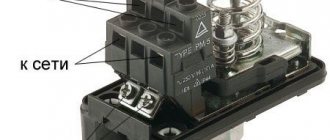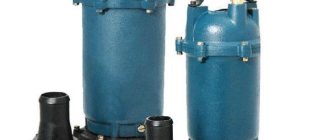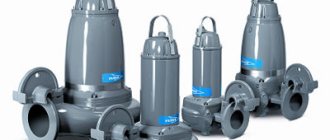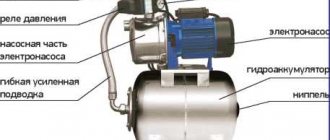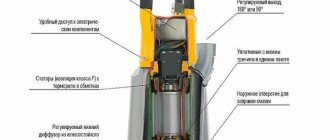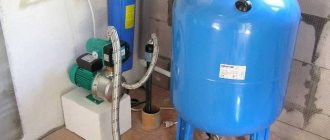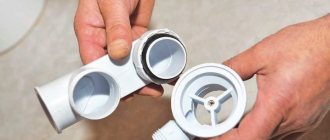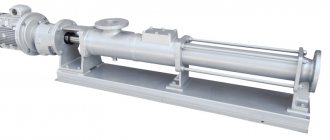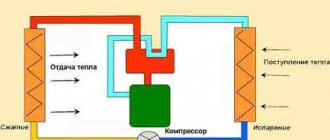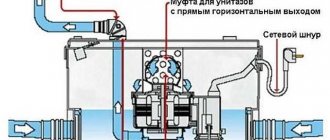Dry running of a pump is the operation of the unit in the absence of the required amount of pumped liquid. If water or other liquid runs out, the pump is protected from dry running. It can be presented in the form of several different devices, the most common of which is considered to be a dry-running relay for the pump.
Why is it necessary to protect the pump?
During operation of the electric pump, it happens that liquid stops flowing into the pipeline. This can happen when the equipment pumps water from any source - a well, a reservoir, a reservoir, a drainage system. As a result, the pumping station will operate at idle speed.
The lack of liquid is not only an unjustifiably wasteful consumption of electricity. This is very dangerous due to overheating and deformation of the working elements of the pump. In most cases, the damage is critical and damaged parts must be replaced.
The pump's electric motor is also affected by heat. With severe overheating, it can burn out, which will make the water supply system completely non-functional. Buying a new pump entails additional financial costs, which is not very pleasant.
Therefore, the liquid that is pumped by the water supply system performs important functions. It cools friction-heated surfaces and lubricates them, reducing the force to be overcome.
Dry running sensor relay Source abo.ua
Causes of idle speed:
- The pump installed is too powerful. It pumps a lot of water, as a result of which the source does not have time to regenerate itself and provide the required volume of liquid.
- The intake elements of the system are contaminated with silt, sand or other objects.
- The water in the source is below the pump installation level.
- The tightness of the pipelines is compromised due to improper installation.
- The pump operates at low system pressure.
- The intake is carried out from a source where periodic interruptions in the water supply occur (centralized systems, storage tanks).
Design and operating features of the protection
Modern pumping stations are sold with built-in dry-running relays. But budget models often lack such protection. Therefore, they are additionally equipped with devices that consist of the following parts:
- membrane (located inside the housing);
- breaking contacts (they regulate the switching on and off of the device when the pressure in the system changes);
- regulating spring (parameters for automatic protection operation are set).
Device design Source kubanteplo.ru
A dry-running relay for a pump, the operating principle of which is quite simple, operates due to the deformation of the membrane. At normal pressure in the system and optimal water flow, it bends, which leads to contact closure. As a result, electricity moves through the circuit, ensuring smooth operation of the system.
When the water flow rate decreases or is absent, the membrane straightens. This leads to open contacts and lack of electricity. The dry running sensor for the pump instantly stops its operation. Resumption of operation occurs manually by the user after filling the source with liquid in the required volume.
Installation of the protection sensor
Only a specialist can correctly install and start the relay for a pumping station or pump. When installing yourself, it is easy to make mistakes, due to which the device manufacturer may refuse warranty repairs.
The cross-section of the electrical cable must correspond to the power of the pump. It is mandatory to have grounding and an automatic protection device against current leakage of more than 30 mA. According to the standard scheme for connecting the sensor to the pipeline, it is recommended to install the device in front of the pump outlet on the pressure branch after the pressure switch.
If there is a need to change the factory settings, then before adjusting the lower cut-off pressure threshold, remove the casing from the device. The adjustment is made with a nut securing a large spring. It is prohibited to turn on the sensor with the cover removed or slightly open.
Recommendations for selecting relays
Dry running protection for a pumping station is selected taking into account its technical characteristics and the characteristics of the water source. There are relay models on the market for installation in a specific location of the water supply system. Modifications of devices are also available for pumps with different capacities and installation depths.
Variety of protective devices Source yandex.net
See also: Catalog of companies that specialize in engineering communications.
When choosing a dry-running sensor for a well pump, its operating features are also taken into account. The protective shutdown is triggered based on the main parameters of the system:
- water level;
- pressure indicators;
- the force of fluid movement in a pipeline.
When purchasing a relay, you must also pay attention to the pressure developed by the pump. This will help avoid false alarms of the sensor and equipment shutdown. This situation is typical when, after pumping water, consumers use up a significant part of it, which leads to a critical decrease in pressure. At this time, the pump does not have time to supply a sufficient amount of liquid, which provokes interruptions in the operation of the system.
Examples of using a control station Source waterhouse.com.ua
When choosing an idle relay for a pump, it is important to know what problems may arise when using them:
- Pressure protection . Such devices may not operate properly when compressed air enters the system. It creates high pressure, as a result of which the pump will continue to function when idle.
- Determination of contact with water . The problem appears if the valve is closed along the pump line. As a result, it will run idle because the system is filled with water. Therefore, when using such relays, it is recommended not to install taps.
- By current consumption. When the pump runs idle, it consumes more electrical energy. This is what the defense responds to. Such devices are effective, but expensive and quite difficult to set up.
- Flow switch . It is not recommended to use if the pressure in the system is generated only by a pump.
A relay of any type will work more efficiently if a hydraulic accumulator is included in the water supply network (the volume is not important). It is also possible that there is no relay when operating the pump in a deep well with good flow.
Connection diagram for a pressure switch with a submersible pump Source aquacontrol.su
What is dry running of a pump?
The term “idling” is sometimes used, although this is not entirely correct. In order for the water supply at home to work normally, you need not only a pump, but also a dry water protection system and automatic on-off switching.
What's wrong with dry running, other than wasting electricity? If the pump operates in the absence of water, it will overheat and burn out - the pumped water is used to cool it. No water - no cooling.
The engine will overheat and burn out. Therefore, protection against dry running of the pump is one of the components of the automation that will have to be purchased in addition. There are, however, models with built-in protection, but they are expensive. It is cheaper to buy additional automation.
How can you protect the pump from dry running?
There are several different devices that will turn off the pump if there is no water:
- dry running protection relay;
- water flow control devices;
- water level sensors (float switch and level control relay).
All these devices are designed for one thing - turn off the pump when there is no water. They just work differently and have different areas of application. Next, we will look at the features of their work and when they are most effective.
Dry running protection relay
A simple electromechanical device monitors the presence of pressure in the system. As soon as the pressure drops below the threshold, the power supply circuit is broken and the pump stops working.
The relay consists of a membrane that responds to pressure and a contact group that is normally open. When the pressure decreases, the membrane presses on the contacts, they close, turning off the power.
When is it effective?
The pressure to which the device responds is from 0.1 atm to 0.6 atm (depending on factory settings). This situation is possible when there is little or no water, the filter is clogged, or the self-priming part is too high. In any case, this is a dry running condition and the pump must be turned off, which is what happens.
An idle speed protection relay is installed on the surface, although there are models in a sealed housing. It works normally in an irrigation scheme or any system without a hydraulic accumulator. It works more efficiently with surface pumps when a check valve is installed after the pump.
When it does not guarantee shutdown in the absence of water
You can install it in a system with HA, but you will not get 100% protection against dry running of the pump. It's all about the particular structure and operation of such a system. Place a protective relay in front of the water pressure switch and the hydraulic accumulator.
In this case, there is usually a check valve between the pump and the protection, that is, the membrane is under pressure created by the hydraulic accumulator. This is a common scheme. But with this method of switching on, it is possible that a working pump in the absence of water will not turn off and will burn out.
For example, a dry running situation has been created: the pump is turned on, there is no water in the well/borehole/tank, and there is some water in the accumulator. Since the lower pressure threshold is usually set to about 1.4-1.6 atm, the protective relay membrane will not work. After all, there is pressure in the system. In this position, the membrane is pressed out, the pump will run dry.
It will stop either when it burns out or when most of the water supply is used up from the hydraulic accumulator. Only then will the pressure drop to critical and the relay will be able to operate.
If such a situation arose during the active use of water, nothing terrible will happen in principle - several tens of liters will dry up quickly and everything will be normal.
But if this happened at night, they flushed the water in the tank, washed their hands and went to bed. The pump turned on, but there was no signal to turn off. By the morning, when water collection begins, it will be inoperative. That is why in systems with hydraulic accumulators or pumping stations it is better to use other devices to protect against dry running of the water pump.
Water flow control devices
In any situation that causes the pump to run dry, there is insufficient or no water flow. There are devices that monitor this situation - relays and water flow controllers. Flow relays or sensors are electromechanical devices, controllers are electronic.
Flow relays (sensors)
There are two types of flow sensors - petal and turbine. Petal has a flexible plate that is located in the pipeline. In the absence of water flow, the plate deviates from its normal state, contacts are activated, turning off the power to the pump.
Turbine flow sensors are somewhat more complicated. The basis of the device is a small turbine with an electromagnet in the rotor. When there is a flow of water or gas, the turbine rotates, creating an electromagnetic field, which is converted into electromagnetic pulses read by the sensor. This sensor, depending on the number of pulses, turns on/off the power to the pump.
Flow controllers
Basically, these are devices that combine two functions: dry-running protection and a water pressure switch. In addition to these features, some models may have a built-in pressure gauge and check valve. These devices are also called electronic pressure switches.
These devices cannot be called cheap, but they provide high-quality protection, serving several parameters at once, ensuring the required pressure in the system, turning off the equipment when there is insufficient water flow.
Name Functions Dry running protection activation parameters\Connection dimensions\Country/manufacturer\Price
| BRIO 2000M Italtecnica | Pressure switch + flow sensor | 7-15 sec | 1″ (25 mm) | Italy | 45$ |
| AQUAROBOT TURBIPRESS | Pressure switch + flow switch | 0.5 l/min | 1″ (25 mm) | 75$ | |
| AL-KO | Pressure switch + check valve + dry-running protection | 45 sec | 1″ (25 mm) | Germany | 68$ |
| Gilex automation unit | Pressure switch + idle protection + pressure gauge | 1″ (25 mm) | Russia | 38$ | |
| Aquario automation unit | Pressure switch + idle protection + pressure gauge + check valve | 1″ (25 mm) | Italy | 50$ |
In the case of using an automation unit, the hydraulic accumulator is an extra device. The system works perfectly when a flow appears - the opening of a tap, the activation of household appliances, etc.
But this is if the pressure reserve is small. If the gap is large, both a HA and a pressure switch are needed. The fact is that the pump shutdown limit in the automation unit is not adjustable.
The pump will turn off only when it has created maximum pressure. If it is taken with a large headroom, it can create excess pressure (optimal - no more than 3-4 atm, anything higher leads to premature wear of the system). Therefore, after the automation unit they install a pressure switch and a hydraulic accumulator.
This scheme makes it possible to regulate the pressure at which the pump turns off.
Water level sensors
These sensors are installed in a well, borehole, or container. It is advisable to use them with submersible pumps, although they are compatible with surface pumps. There are two types of sensors - float and electronic.
Methodology for performing installation work
The dry running sensor is installed as follows:
- Idling protection must be mounted together with a sensor that measures pressure indicators. The device connection diagram is selected in accordance with the recommendations given in the manufacturer’s instructions.
- Select the area of the system where the device will be installed. Experts recommend doing this on the pipeline leaving the pump. The relay should be located after the pressure sensor.
- In the area where it is planned to install the protective device, a tee fitting is installed.
- Water is drained from the pipeline on which the installation takes place. Remove the cover and liner from the device and attach it to the fitting. The thread must be sealed using plumbing tape.
- A break is made in the cable that powers the pump. A protective relay is inserted into this section. When the sensor contacts open, the electrical current is cut off, causing the pump to shut down.
Which protection to choose
Before selecting a suitable dry run sensor, consider the following factors:
- depth of the well or any other container;
- diameter;
- which pump is installed: submersible or surface model.
The simplest and most affordable solution that protects the pump from idling is a float indicator. But it is not suitable for wells with a small diameter, so it is most often installed in wells.
If you know that the water source contains clean water, then the best choice is a water level sensor. If the quality of the liquid is questionable, then it is better to take a closer look at the flow switch or pressure sensor.
A level sensor will definitely not be suitable if there is a possibility that the filter of the pump unit is clogged with debris. Even if it signals a normal water level, liquid will still not be supplied. As a result, the motor will burn out.
It is possible to operate a well or well without installing sensors or relays. But to do this, you will have to constantly visually monitor how the water resource flows. Then, for example, if liquid does not flow to the pump, the user will manually turn it off. If this is not possible, then in order to protect the equipment from overheating and breakdown, it is still worth purchasing a protective sensor that will pay for itself. Moreover, finding a suitable device in Moscow is not a problem.
Setting up automation
Protection against dry running of the pump is activated depending on the user-specified pressure indicators inside the system. To set the operating parameters of the devices, there is a special adjusting screw. It is connected to a spring, which changes the tension force when it is turned in a certain direction. It is with the help of the screw that the user sets the pressure indicators at which the electrical contacts will open and the pump will stop working.
Most models have standard settings. The lower limit is 1.42 bar, the upper limit is 2.84 bar. But if necessary, the user can change these parameters. To increase the threshold for triggering the device, turn the screw counterclockwise, and decrease it clockwise.
When manually adjusting, it is important to set parameters that do not exceed the pressure created when the pump is normally functioning. Otherwise, there is a possibility that the equipment will not respond at all to changes in the properties of the system, which will lead to its breakdown.
Relay adjustment
To adjust the device, a screw is used, which is located in the upper part of the case. To configure the model, readings are taken from the sensor. To increase the permissible pressure level, the screw is turned clockwise. With reduced voltage, the speed of contact closure slows down. The problem may also be with the contactor with the starting system. To reduce the pressure level, the screw is turned counterclockwise. Much in this case depends on the relay parameters and the maximum power of the pumps.
Briefly about the main thing
A relay that prevents the pump from running dry is an extremely important device. It does not allow idling, which is dangerous due to the failure of the main components of the water supply system.
When choosing a relay, the characteristics of the pump and the level of pressure it creates are taken into account. The installation location of the protection is taken into account, which affects the requirements for its operating parameters.
The connection diagram for the relay and related units is selected taking into account the manufacturers’ recommendations. The device is also connected to the electrical network and the protection response limits are set. The relay is adjusted using screws (by turning them in one direction or the other).
Ratings 0
Protective relays LP 3 - description and characteristics
A device of this hydrostop type is used in water supply systems and is intended to shut off borehole and surface pumps in automatic mode. The devices are switched off immediately after the liquid level drops below permissible limits. The main technical characteristics of the relay include:
- The maximum switching current level is 16 A;
- Temperature range of pumped water – from 1 to 40 °C;
- Pressure range during operation – from 0.5 to 2.8 atmospheres;
- Electrical protection class IP44.
The manufacturer provides a 1-year warranty for this type of relay model. The device shows the reliability and effective protection of pumps during operation.
